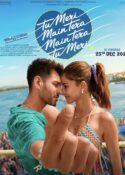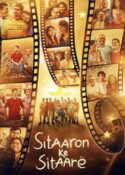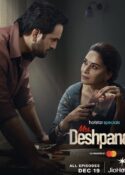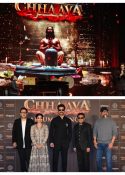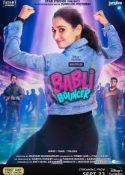 In this Subhash K Jha feature, he focusses in Paoli Dam’s powerful vendetta act on Hate Story. Paoli speaks exclusively about the film.
In this Subhash K Jha feature, he focusses in Paoli Dam’s powerful vendetta act on Hate Story. Paoli speaks exclusively about the film.
Long before The Kashmir Files, Vivek Agnihotri directed this interesting revenge drama released on April 20, 2012. The fascist avenging woman has always been a favourite figure of fantasy fashioning for our films. Who can forget Nargis gunning down her own son in Mehboob Khan’s Mother India? The motivations for revenge in Hate Story are not quite the ones that impelled the woman protagonist to rise up in arms in Mother India or, for that matter, in Bhavna, a film directed by Hate Story producer Vikram Bhatt’s father Pravin Bhatt, where Shabana Azmi killed her own husband.
Really, who needs a gun to get even when you have sex? Paoli Dam doesn’t give a damn if her bare back or flesh flash across the screen. She displays a healthy attitude of disdain for the camera, letting it swoop down on her vulture style, never allowing her vengeful character’s erotic journey to get sleazy, cheesy, or lurid. The camera violates her character’s privacy with her consent.
Hate Story is a tale that invites provocative measures of counter-argument. When the protagonist, Kaavya (Paoli Dam), gets down to revenge, she spares no one, least of all herself. She announces she wants to be a sex worker, and thereafter, there’s no looking back.
Paoli’s Kaavya uses her physique to lure her enemy into her trap. Director Vivek Agnihotri cuts into her journey of self-destructive vendetta like a knife. The screenplay sometimes stretches the limits of belief. But what the heck! No one is making a statement here on the politically correct conduct of the Indian woman.
In what can be regarded as one of the most defiantly unconventional debut performances, Paoli lets herself go with the furious flow of her character’s vendetta. The episodes hammer into one another with scarce room to breathe. The pace is dizzy most of the way. And when it slows down, you feel the protagonist’s vendetta is losing its steam.
Steamy lovemaking scenes are strewn across the narrative’s stricken landscape. The soundtrack suggests there’s an urgent tragedy nudging the erotic content. The dialogues by Rohit Malhotra don’t shy away from telling it like it is.
Vikram Bhatt’s screenplay is Sidney Sheldon’s territory. It doesn’t shy away from showing the heroine in an unflattering light. This is new-age cinema with no room for conventional narrative devices or apologies for what the protagonist sets out to do.
If in The Dirty Picture, Vidya Balan wore her sexuality on her sleeve, in Hate Story, Paoli uses her sexuality like a favoured currency in the stock market. Mint-fresh and shock-proof, Paoli interprets her character with vigorous conviction. As her adversary, Gulshan Devaiah oscillates between rage and anguish quite effortlessly.
Hate Story is not quite the tale of the simpering wronged woman we’ve been seeing in our films since the time Adam impregnated Eve. Hate Story pushes the envelope so hard, all the contents spill out in a torrential tumble of tantalising power-play set within the world of corporate battles and gender conflicts.
This is a most riveting and aesthetic saga of a woman’s revenge against the man who’s wronged her since R.K. Nayyar’s Inteqaam, except for the fact that Paoli does things Sadhana in Nayyar’s film could have never imagined.
Recalling her powerful debut in Hindi cinema, Paoli Dam says, “It’s hard to believe it’s been thirteen years since Hate Story was released. Portraying Kaavya Krishna was a transformative experience for me; she was a character who navigated immense personal turmoil to reclaim her agency and voice. At the time, it was a bold narrative that delved into themes of betrayal, resilience, and empowerment. The film challenged conventional storytelling and opened up conversations about the complexities of a woman’s journey in a patriarchal society. While it received mixed reviews, it undeniably left a mark and paved the way for more women-centric stories in Bollywood. In my artistic journey, Hate Story stands as a significant milestone that pushed boundaries and allowed me to explore the depths of human emotion. Looking back, I’m proud of the conversations the film initiated and the path it carved for storytelling. It stands as a testament to the evolving dynamics of cinema and the importance of challenging societal norms.”


